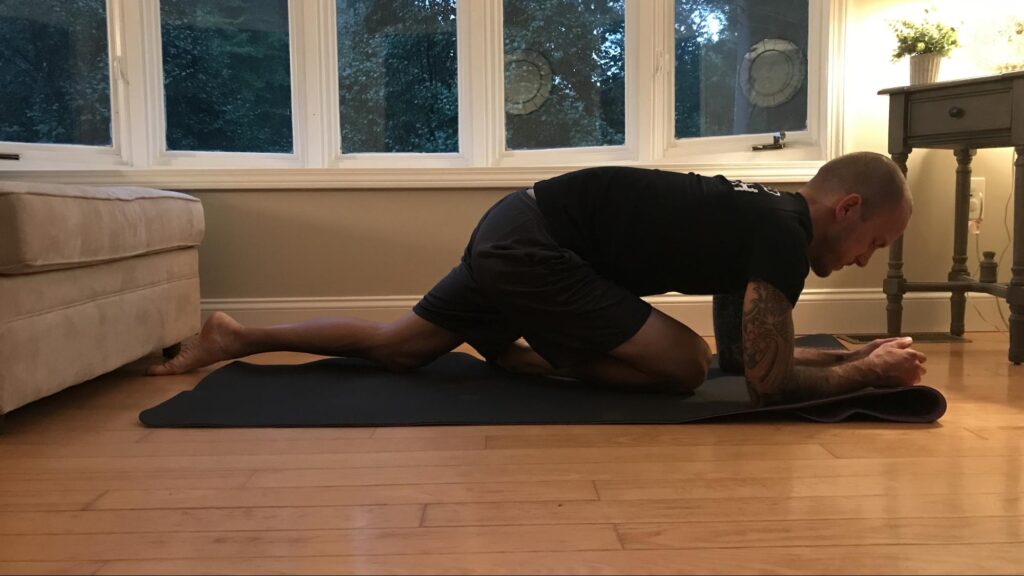https://www.trainingpeaks.com/blog/best-time-saving-stretches-cyclists/

We all know that cycling is great for a myriad of things, but the bike keeps your body in a fixed position, sometimes for hours on end. This can wreak havoc on the neck, middle back, hips, and lower extremity muscles, causing them to become shortened, painful, and lose their ability to produce power.
This, of course, is unacceptable and the exact opposite effect we want after spending time training outdoors, or in the pain cave! So, do yourself a favor and spend a few minutes stretching your legs out after you beat them up—your body will thank you, and it will give you some precious time to think about life (i.e. more cycling) for a while.
The following stretching routine is designed for athletes who are time-crunched and need to really maximize any time dedicated to their fitness.
The Rules
- The ideal time to stretch statically is POST WORKOUT. Bacurau et al. (1) found static stretching actually impairs lower limb force production, which is obviously not ideal before a ride. Instead, a dynamic stretching routine should be performed, like this one to help promote neuromuscular activation.
- Stretches should be held for 30 seconds minimum for best results (2). It takes your muscle sarcomere time to relax enough to make static stretching beneficial and allow the muscle to lengthen. If you have the time to hold them for longer, go for it!
- Stretches should be performed in a comfortable range of motion, so no crying because it hurts so much, but you also want to feel like you are doing something too.
- Alternate each side with each consecutive stretch, so as one side is resting, the other side is being stretched.
- Perform the stretches 2-3 times each.
The “Couch” Stretch
Set up in front of a couch/chair/bench, with one foot on the couch and the other knee on the floor in a half kneeling position. From here, bring your hips forward and lean your body backward until you feel a comfortable stretch in the front of your hip as well as the thigh. Repeat on the other side.
Hamstring + Chest Stretch
Bring your feet wider than shoulder width apart and lace your fingers behind your back. Then, lean your body forward and reach your arms backward until a comfortable stretch is felt in the hamstrings, as well as chest/front of the shoulders.
Inner Thigh + Middle Back Stretch
From a sitting position, bend your knees, place your feet together, and let your legs fall out to the side until a comfortable stretch is felt in your inner thighs. While holding this position, lace your fingers together, bring your arms up, then reach forward trying to open your shoulder blades, and drop your head down until a comfortable stretch is felt in between the shoulder blades and the back of your neck.
The Pigeon Pose
Start off in a quadruped position. From here, thread one leg under you, then sit back until a deep, but comfortable, stretch is felt in the glutes. Repeat on the other side.
Happy Stretching!
Bacurau, R. F., Monteiro, G. A., Ugrinowitsch, C., Tricoli, V., Cabral, L. F., & Aoki, M. S. (2009). Acute Effect of a Ballistic and a Static Stretching Exercise Bout on Flexibility and Maximal Strength. Journal of Strength and Conditioning Research,23(1), 304-308. doi:10.1519/jsc.0b013e3181874d55, Bandy, W. D., & Irion, J. M. (1994). The Effect of Time on Static Stretch on the Flexibility of the Hamstring Muscles. Physical Therapy,74(9), 845-850. doi:10.1093/ptj/74.9.845




Comments
Post a Comment